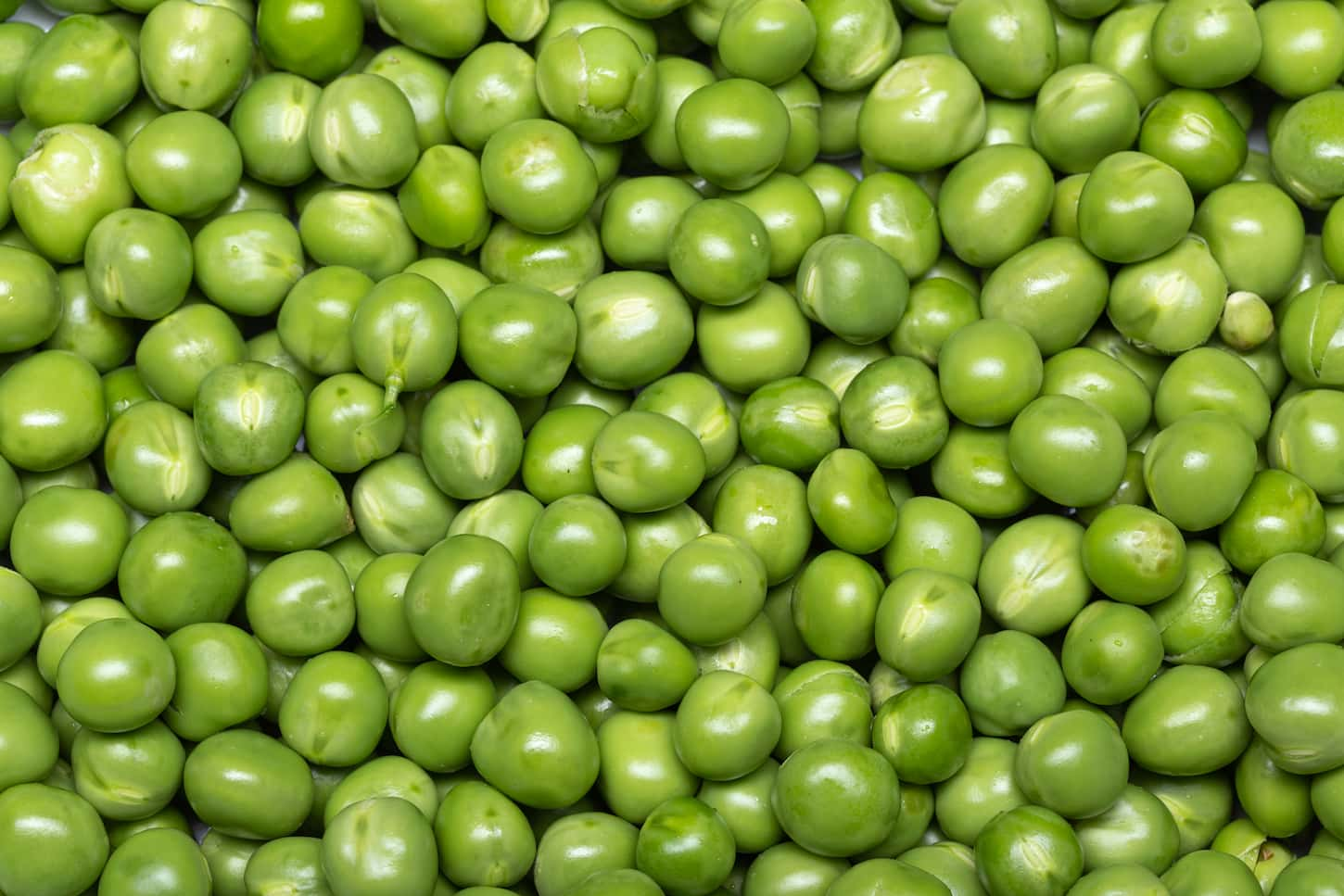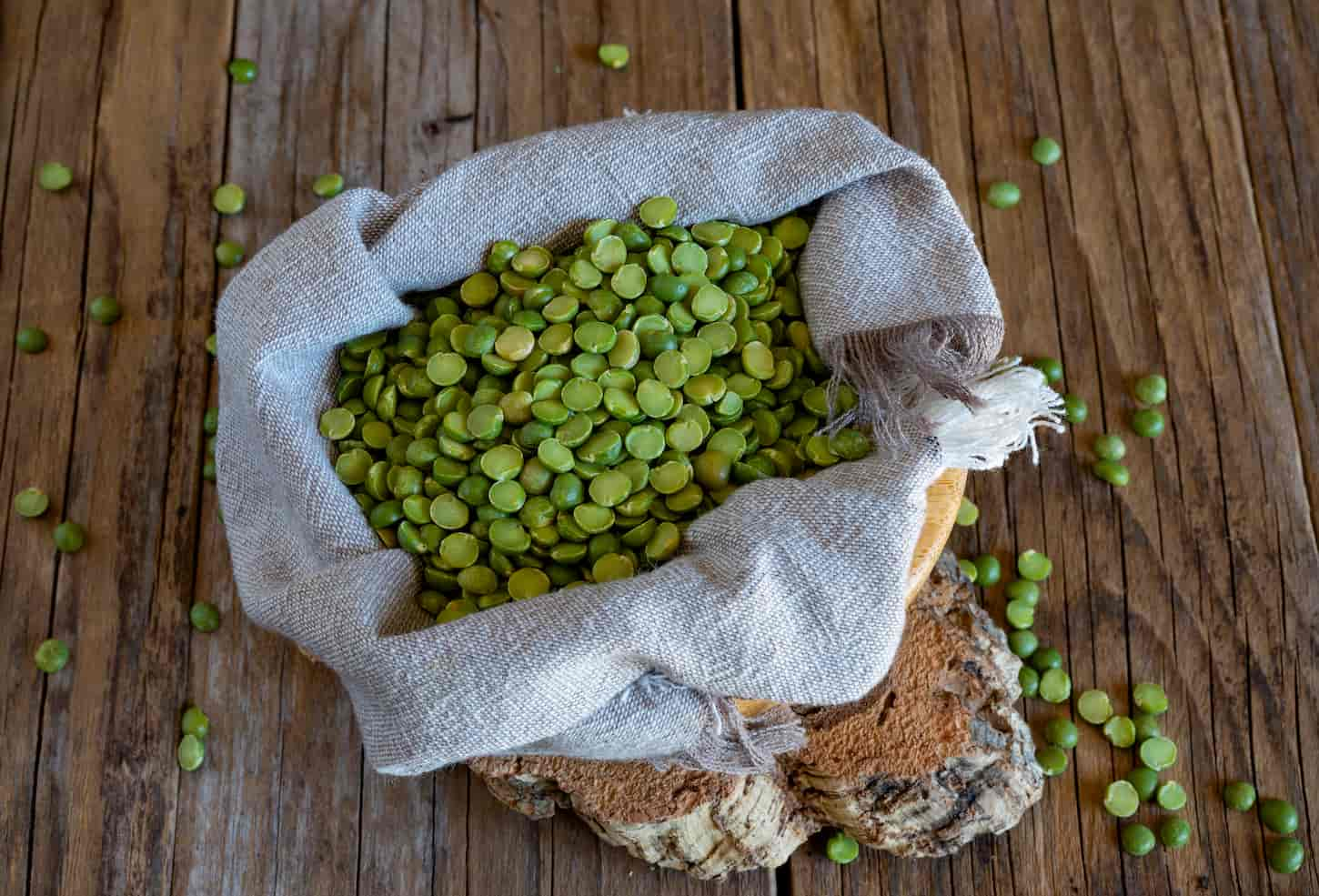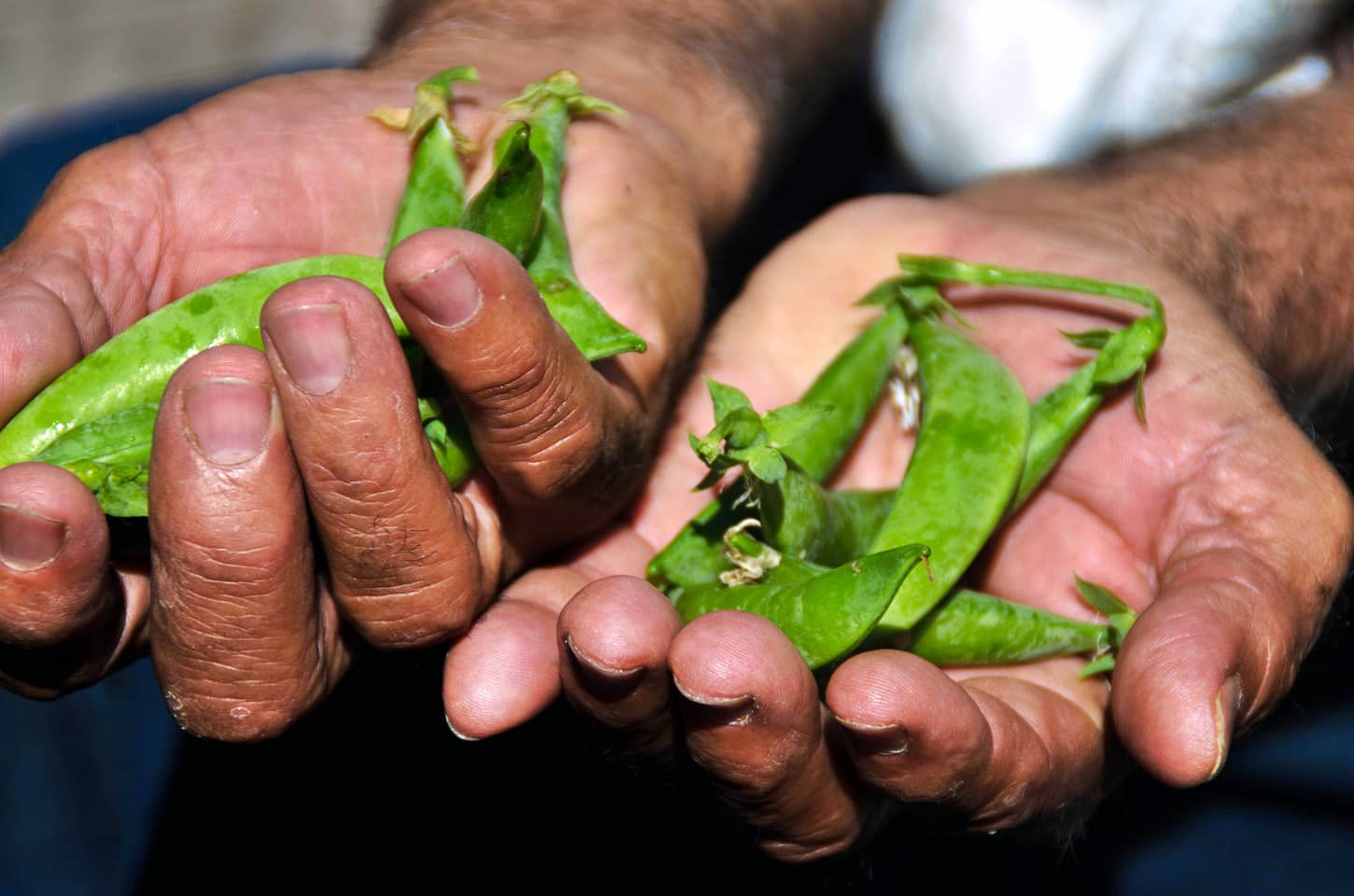It’s common to find peas in almost every type of cuisine. These edible seeds are essential to different cultures and popular among people in the Middle East, North Africa, and Europe during the Middle Ages. Peas eventually became popular in the United States.
Peas are green because people want them to be that color. Different pea colors exist, like yellow, violet, and brown, but people tend to prefer green peas. At some point in history, humanity developed a preference for green peas and decided to focus on growing green peas.
Color has a lot of influence in the market. People are always looking for ways to stay healthy in today’s society, and it’s no surprise that they look for green-colored vegetables to add to their diet. So, having some green peas (canned, frozen, fresh, or otherwise) is one easy way to get that color into our daily meals.
So, why are these pods and seeds green, and do they come in other colors? Let’s dive into this and find out.

What Peas are Green?
Most peas we see on the market are green; these are what we call a garden, English, or simply green peas. Other types include snap and snow peas. Occasionally they may turn up in a different color, but most of the harvest retains their vibrant green hue.
Peas are delicious, but not every variety is green. That’s because they originally came in more colors. Let’s get into that now.
Why are peas green?
Peas are green because of the abundance of chlorophyll, a substance responsible for why most vegetation is green. However, in history, peas still tended to lose their green pigment after some time and had to be harvested right away before people found the correct gene.
When scientists discovered this, they decided to plant only the seed with the gene to mass-produce green peas. The green gene is recessive, but it became common because people only wanted to grow green-colored peas.
Where do green peas come from?
Green peas are the predominant color grown in gardens and on farms. Green peas are selected specifically for that color and have a green genetic marker. Green pea plants will produce green pea plants.
Peas (grown on a farm or in a garden) already have green genes and will only sprout green peas. So, even if a yellow pea ends up in the mix, it is most likely to have the correct gene and produce green pea plants.
What Color Are Peas Originally?
Green is one of the original colors of peas; the others are yellow and shades of violet. Before green peas became common, these were the different shades of peas that were available. Eventually, the other two colors became rare.
I’ve never seen violet peas in person, but I want to grow them now.
Are There Other Colors of Peas?
Occasionally, there is a rare yellow pea in the garden, but that will not affect the number of green peas we end up harvesting. However, other types of peas out there may come in assorted colors, such as yellow, beige, brown, and violet.
Can peas be yellow?
Sometimes a rare yellow pea will appear in green pea harvest – but it is uncommon. Scientists have ensured that the chances of a yellow pea showing in the harvest are at their lowest point to maintain the green hue of peas.
However, other peas are primarily yellow, like yellow split peas. Unlike garden peas, farmers try to keep the yellow and green genes of the peas.
Where do non-green peas come from?
Peas that are a different color mean that there was a plant with a dominant yellow gene attached to it, making the color of the green pea lean to the yellow side. It doesn’t happen often and will not cause a significant decrease in green-colored peas.
Unless, in the future, humankind decides to grow yellow peas instead, the majority of them will always remain green. However, there is a yellow pea that grows naturally. While it’s not a pea, it’s still part of the legume family.
For those unaware, peas are not vegetables – they are legumes. However, they are eaten the same way as any vegetable. It’s the difference between botanical classification and culinary usage. Kind of like how tomatoes are a fruit, but we use them like vegetables.

Are Yellow and Green Peas the Same?
Yellow and green peas are the same in flavor and only different in terms of color. Therefore, they both have the same nutritional value. However, split peas have a green and yellow variety, and there is a difference in those.
Is there a difference between yellow and green peas?
The difference between the yellow and green varieties is mainly their flavor. There is also a slight difference in health benefits, but not by much. Generally, the two peas give the same health benefits, with one variety offering slightly more than the other.
Taste and flavor
Yellow split peas have a milder flavor, so households who want to include peas in their diet but aren’t fond of the flavor can opt to have yellow split peas instead. They also taste slightly nutty compared to regular and green split peas. It’s best to try them out and see for yourself.
Color and other
The other most obvious difference between the two peas is their color. Yellow peas are allowed to grow naturally without science to ensure the yellow gene is only present in a minimum number of plants.
Is Green Considered to be a Recessive or Dominant Trait for Peas?
Green is a recessive trait for peas, but that does not mean it is common. There are still more green peas than will ever be yellow because farmers and scientists have only been breeding green-colored peas for centuries.
The number of green or yellow peas highly depends on the number of versions of each gene in the population. Whichever gene is more present in the population will be a common one regardless of if it is dominant or recessive.
What Are the Three Types of Green Peas?
There are three types of green peas: English peas, snow peas, and sugar or snap peas. While all are green, they have slightly different tastes and textures. In addition, some of these plants have more edible parts than others.
English peas
The most familiar green pea is the English Pea. These cylindrical peas have edible seeds, but the pods aren’t edible. Normally, people wait for the peas to be fully plumped before harvesting and shelling the peas for consumption.
Snow peas
These peas may look odd to people who are used to seeing the cylindrical look of the English Pea. Snow peas are flat, with a few bumps on the pods that show where the peas are growing. Also, the peas aren’t as fat as the English peas.
An additional difference between the two varieties is their pods. While English peas don’t have edible pods, snow peas do. They also don’t have to be fully plumped to be harvested and consumed.
Snow Peas are also often referred to as Chinese Pea Pods.
Sugar snap peas
Lastly, we have the sugar snap peas. These peas are a mix of the peas mentioned above. The fantastic thing about this type of pea is they managed to inherit the best features of both pea plants.
Like the English peas, we can wait for them to plump up a bit, but the best part is that the pods are edible.
Since the pods are edible, people don’t need to shell them. However, if we don’t like the texture or taste of the pod, we can still choose to shell the pods and cook the peas separately.

What are the Benefits of Peas?
Peas may be small, but they are jam-packed with health benefits. Adding almost any type of pea into the diet will help improve our healthy lifestyle. These tiny seeds have high concentrations of different vitamins and minerals. They also have a good number of antioxidants and phytonutrients.
If unsure what peas do to help benefit the body, here’s a (relatively quick) breakdown.
- Peas are high in proteins and can be combined with other plant-based proteins to supply a complete protein profile.
- Peas are high in fiber and are also said to play a huge role in helping our digestive system continue to work in top shape.
- Peas are full of beneficial nutrients that support healthy lifestyles. This isn’t a health website, so we won’t dive into all of the health benefits of carotenoids, lutein, zeaxanthin, and coumestrol.
Along with its protein content, the fiber found in peas also regulates how people digest starches. So, instead of food causing blood sugar to spike, a serving of peas helps break down the carbohydrates, causing blood sugar to stay under control.
Key Takeaways and Next Steps
Finally, all the vitamins and minerals in peas improve a person’s immunity against harmful diseases and have inflammatory properties. Essentially, if people eat the proper serving of peas, they lower the risk of having diabetes, heart disease, and arthritis.
Peas are green because most people want them that way. It’s been like that for many generations.
Hopefully, you understand why peas are green, and they can also be different colors and still have the same taste and nutrients. We have written some additional articles just for you. Please check them out below:
- Are All Peas Mangetout? Definition and How to Tell
- Complete Guide to Peas: Best to Grow, Sweetest, FAQs
Resources
Learning from your own experience is essential, but learning from others is also intelligent. These are the sources used in this article and our research to be more informed as homesteaders.
- Starr, Barry. “Why Are Green Peas Recessive and Common?” The Tech Interactive, 12 Feb. 2022, www.thetech.org/ask-a-geneticist/why-green-peas-are-recessive-and-common.
- ‘Stay-green’ genes. (n.d.). John Innes Centre. Retrieved September 11, 2022, from https://www.jic.ac.uk/research-impact/molecules-from-nature/impact/peas/the-history-of-pea-research-at-the-john-innes-centre/stay-green-genes/.
- Yellow Vs Green: A Peas by Peas Comparison of Two Variants – M&T Food Industries, Inc. Retrieved September 11, 2022. 17 June 2016, mtfii.com/2016/06/17/yellow-vs-green-a-peas-by-peas-comparison-of-two-variants.